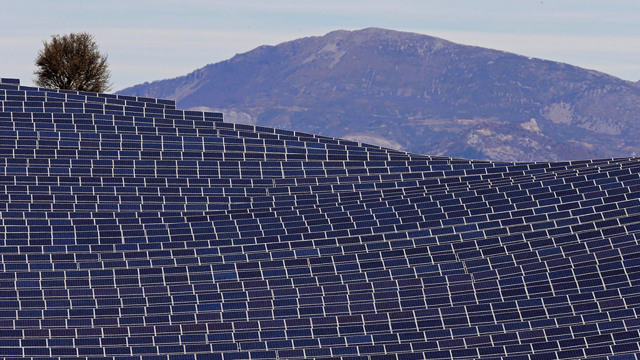Very soon billions of solar panels around the world will have to be decommissioned. And when they are disposed of, many materials that could be reused to build new ones will go to waste.
It is estimated that 78 million tons of waste will be produced by 2050. This is about four billion solar panels. But these panels weren’t designed for the raw materials inside them to be extracted and then used again, so it is likely that a large part will be shredded in recycling plants. This contaminates the materials, making them difficult to recover.
Electronic devices need to be designed in such a way that their components can be reused and waste is limited. If we do not change our approach to the exploitation of raw materials, we will slow down the spread of renewable energies which are essential for our future and to combat climate change, and the materials we will need will be lost in the waste we have generated.
Useful waste
If recovered, the components of the end-of-life solar panels could be worth around $ 15 billion (€ 13.3 billion) and could be used for two billion new panels. But the benefits would not only be economic, given that 70 percent of greenhouse gas emissions are linked both to the extraction of raw materials and to the production and use of goods. Therefore, in order to cope with climate change, the exploitation of resources must be reduced at the global level.
It is important to avoid a scenario of scarcity of materials, because there is a risk of limiting the spread of sustainable technologies and of being less incisive in the fight against the climate crisis. For example, semiconductors – widely used in computer chips – are also needed for solar panels and energy-saving light bulbs, while magnets found in wind turbines are also used in low-emission vehicles. Some components, such as indium, have already been eliminated in new generation solar plants for fear that supplies will be scarce.
The benefits of reuse
We have developed an insatiable appetite for raw materials. It is estimated that in 2020 one hundred billion tons of materials were taken, and only 8.6 percent was put back into circulation in the economy. As a result, e-waste has the fastest growth across the industry, with 53.6 million tonnes produced in 2019 globally.
According to a recent report by Giraffe innovation (a consultancy firm specializing in environmental issues) carried out in collaboration with the University of Swansea, in 2019 the United Kingdom produced 1.6 tons of electronic waste which contained almost four quintals of strategic raw materials. , for a potential value of 148 million pounds (approximately 175 million euros). Due to the lack of infrastructure and inefficiencies in recycling processes, combined with limited designs for end-of-life appliances, most of these materials will go to waste.
Currently, the fact that valuable components are not recovered and recycled efficiently makes these technologies unsustainable. Globally, the recycling rate of thirty strategic elements for the development of new technologies is less than 1 percent.
One of the main shortcomings in the design phase is due to the fact that the components of the equipment are “glued” together, and to dispose of them they have to be reduced into small fragments made of mixed materials that are difficult to separate at a later time. Recent research on the recovery of raw materials from electronic waste highlights another problem: the image below portrays a typical printed circuit board and shows the position of strategic materials, but also the difficulty of extracting them, first of all because they are located on the board in small quantities, but also because sophisticated equipment is needed to identify their position. And this even before starting the separation and recovery processes. The key is in the design phase, which needs to be improved.
In order to reuse these materials and focus on a circular economy (i.e. an eco-sustainable system that regenerates itself), we need projects that take into account end-of-life products, as well as better infrastructures for their transformation and recycling. This approach will have positive consequences for consumers, as products will last longer and can be easily updated and repaired.
To make new technologies truly sustainable, it is necessary to provide for the possibility of extracting strategic raw materials from products that arrive at the end of their life.
We can imagine our future with the circular economy as its goal from the beginning. We should think of waste as a resource, to offer society the maximum benefits and truly sustainable technologies.
(Translation by Davide Musso)
.
